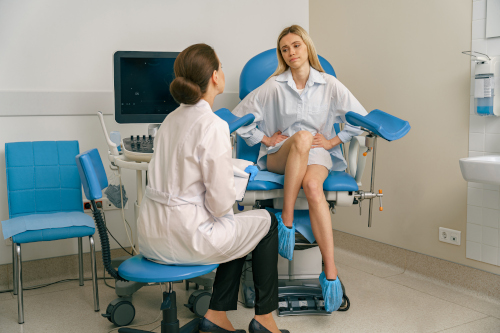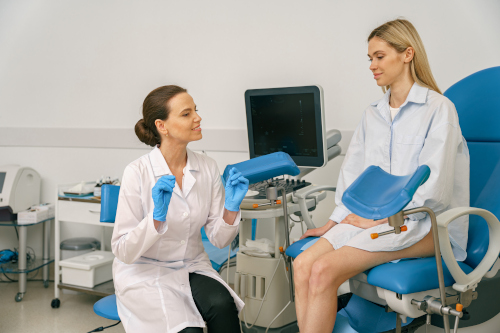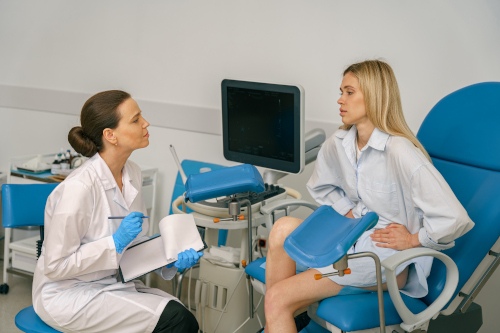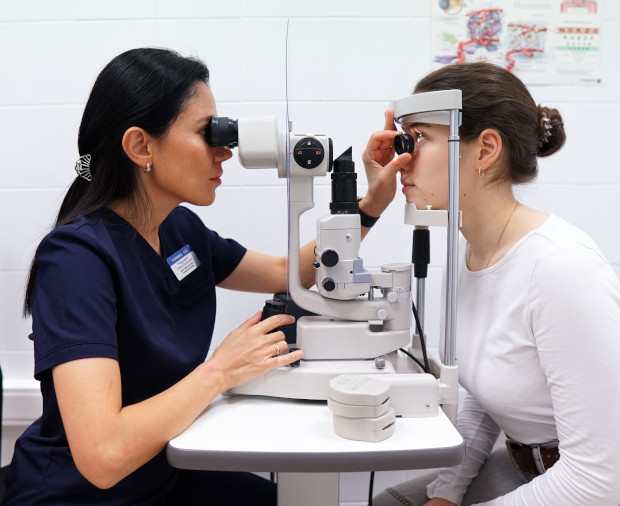Prolapse of the uterus and vagina
Prolapse of the uterus and vagina is a pathological process in which the muscles and ligaments of the pelvic floor weaken, which leads to the organs falling outside the genital slit. According to statistics, 40% of women experience signs of prolapse of the pelvic organs. In 15% of cases, surgical treatment is performed.

specialists

equipment

treatment
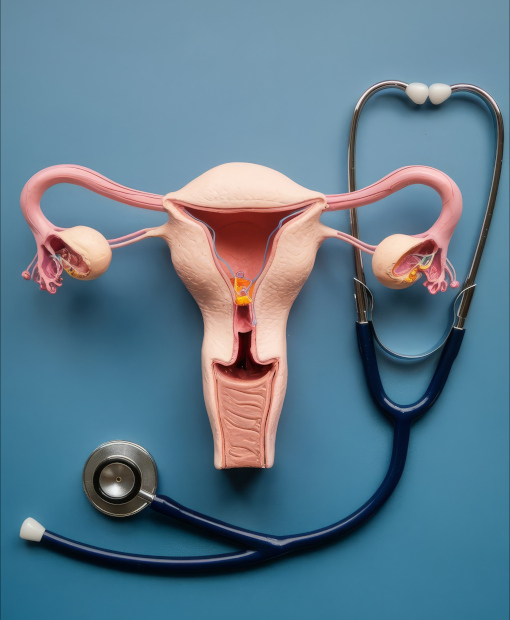
Diagnosis of the disease
During the appointment, the doctor asks questions about symptoms, lifestyle, history of childbirth and recent surgeries. The second stage is a gynecological examination. The doctor evaluates the position, condition of the vagina and the ligaments that hold it. Sometimes the woman is asked to tense the abdominal muscles (for example, to imitate a cough) to determine how the organs shift under load.
If the examination is not enough, the doctor prescribes additional tests:
- Ultrasound of the pelvic organs. Allows you to examine the position of the uterus, ligaments, bladder, intestines, check for tumors or cysts
- MRI or CT. Provide a detailed image of the pelvic organs. They are performed before surgery, if there is a suspicion of inflammation of the uterus and appendages, endometriosis, ovarian apoplexy
- Urodynamic study. Helps to evaluate the functioning of the bladder, urethra, urinary sphincter, to check for any disorders associated with prolapse
- Colposcopy. A detailed examination of the vaginal mucosa and cervix is performed with varying magnification. Reveals inflammation or microtrauma that often accompany uterine prolapse
If there are complaints of frequent infections or discomfort when urinating, the doctor performs a cystoscopy to assess the condition of the urinary system. The study helps to detect inflammatory processes, erosions, ulcers of the bladder walls, stones, tumors.
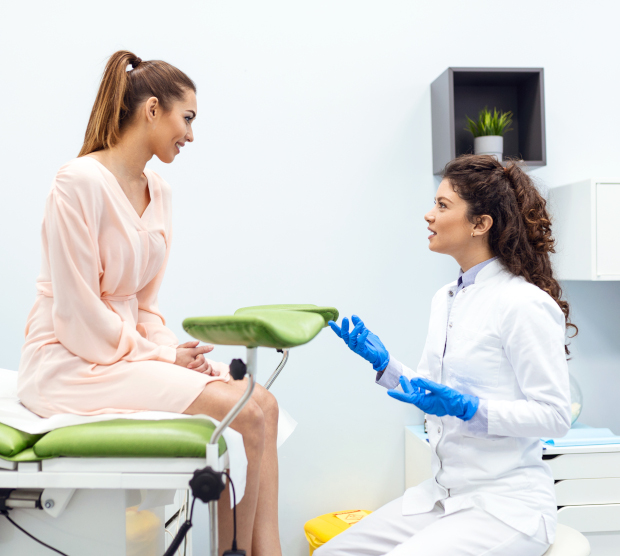
The following symptoms are typical for uterine prolapse:
- Heaviness and pressure in the lower abdomen. Discomfort increases if the woman stands for a long time, lifts heavy objects, coughs
- A nagging pain in the lower back. Resembles the sensations before menstruation, but appears without an apparent cause
- Painful sensations during sexual intercourse that do not allow you to fully relax
- Urinary disorders. Frequent urges, a feeling of incomplete emptying of the bladder are signs that are sometimes confused with cystitis
- Difficulty in defecation. Occurs due to prolapse of the rectum
- A sensation of a foreign body in the vagina. It appears in the later stages of the pathology, when the tissues descend and the organ comes out
Other clinical signs include profuse discharge from the vaginal walls and frequent urinary tract infections.
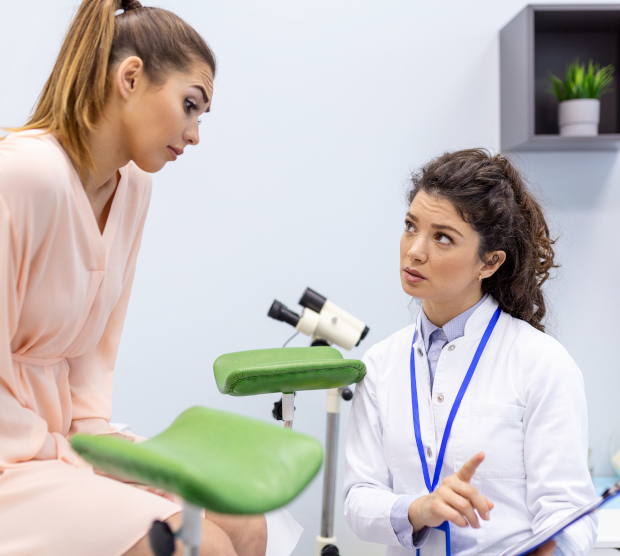
Prolapse (drooping or falling out) occurs due to weakening of the muscles and ligaments that support the uterus and other pelvic organs. Most often, the pathology develops under the influence of the following factors:
- Difficult or multiple births
- Loss of tissue elasticity due to age-related changes and hormonal imbalances
- Constant stress that increases pressure in the abdominal cavity (lifting weights, chronic cough, constipation)
- Excess weight
Another factor is surgery on the pelvic organs. After surgery, the ligaments weaken, the normal arrangement of organs is disrupted. In rare cases, prolapse is caused by a genetic predisposition.
Stages of uterine prolapse
The development of prolapse occurs gradually. Each stage is characterized by a certain degree of organ displacement.
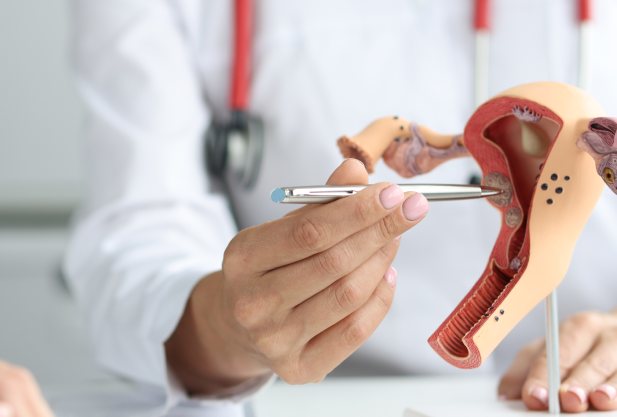
-
First stage
The organ shifts downwards, but remains within the pelvis. Sometimes a woman notices a feeling of slight heaviness or pressure in the lower abdomen after physical exertion.
-
Second stage
The organ descends lower, and the cervix becomes visible at the entrance to the vagina. At this stage, discomfort becomes more noticeable. Urination disorders and constipation due to pressure on the intestines appear.
-
Third stage
The cervix begins to extend beyond the vagina. The process is accompanied not only by physical discomfort, but also psychological - the sensation of a foreign body interferes with full activity. Women often report difficulty walking, the inability to wear tight clothing, and increased pain in the lower back.
-
Stage four
The uterus extends completely beyond the vagina. The woman experiences constant pain, inflammation, and significant inconvenience in everyday life. This serious condition requires urgent medical attention, as there is a high probability of tissue damage or infection.
Treatment of prolapse of the uterus and vagina
Conservative treatment
Suitable when prolapse is at an early stage or there are contraindications for surgery. Prolapse therapy includes:
- Strengthening the pelvic muscles. To restore muscle tone, it is important to do Kegel exercises. Regular exercise strengthens the ligaments that support the uterus.
- Using a pessary. A small silicone device is inserted into the vagina to hold the uterus in the desired position. The attending physician will help you choose the right size.
- Hormonal therapy. Estrogen-based drugs restore the elasticity of the ligaments and improve the condition of the vaginal mucosa.
- Physiotherapy. Muscle stimulation with electricity enhances the effect of exercises, accelerates the process of tissue regeneration.
Conservative methods do not eliminate prolapse completely, but they help cope with the symptoms and prevent progression.
Surgical treatment
If conservative methods do not help with uterine prolapse, doctors prescribe surgery. Surgery not only eliminates prolapse, but also restores self-confidence.
Types of surgical interventions:
- Colporrhaphy. An operation to strengthen the walls of the vagina. It is performed if the uterus presses on adjacent organs and causes discomfort
- Laparoscopic fixation. A plastic surgery during which an artificial ligamentous apparatus of the pelvic organs is formed. The technique preserves the ability to bear and give birth to a child
- Hysterectomy. Involves the complete removal of the uterus through the vagina or abdominal wall. The operation is performed in case of complicated prolapse, precancerous conditions, cervical cancer, recurrent polyposis
After the operation, it is important to follow the doctor's recommendations: avoid stress, do strengthening exercises and come for regular check-ups.
If you have noticed unpleasant symptoms, take care of your health right now by making an appointment at the K+31 clinic! Our doctors are experts with many years of experience who will not only offer modern and safe treatment, but will also morally support you at every stage. We have honest prices, which you can always see on the website in the price list.
Answers to popular questions
Doctors at the K+31 clinic answered frequently asked questions about uterine prolapse.
How does uterine prolapse affect fertility?
Prolapse changes the angle and position of the uterus in the pelvis. This prevents sperm from reaching the egg, especially if the cervical canal is narrowed or deformed. Prolapse of the uterus is often accompanied by congestion in the pelvis. They worsen the quality of the endometrium, which complicates the implantation of the fertilized egg. Also, with prolapse, ovarian function decreases, and ovulation is disrupted.
How does uterine prolapse affect sexual life?
Intimate life changes significantly with prolapse. Women are concerned about pain and dryness in the vagina, decreased libido. In the early stages of prolapse, exercises and hormonal therapy help get rid of discomfort. After surgery, most patients return to normal sexual life.
Is it possible to avoid recurrent prolapse after treatment?
Yes, it is possible if you follow all the doctor's recommendations. The key measures are strengthening the pelvic floor muscles, maintaining a normal weight, avoiding excessive physical activity and treating concomitant diseases. Regular exercise and a healthy lifestyle are the basis for successful prevention of relapse.
Is uterine removal always necessary for prolapse?
No, uterine removal is performed only in difficult cases. Most operations are aimed at restoring the position of organs without removing the organ. We try to take into account the wishes and age of the patient, and offer the most gentle method.

This award is given to clinics with the highest ratings according to user ratings, a large number of requests from this site, and in the absence of critical violations.

This award is given to clinics with the highest ratings according to user ratings. It means that the place is known, loved, and definitely worth visiting.

The ProDoctors portal collected 500 thousand reviews, compiled a rating of doctors based on them and awarded the best. We are proud that our doctors are among those awarded.
Make an appointment at a convenient time on the nearest date
Price
Other services
Hormone therapy
Radio wave gynecology with the Surgitron deviceLaser therapy using the Photona device
Sling operations Ectopic pregnancy Delayed menstruation Removal of the uterus (hysterectomy) Thrush (vaginal candidiasis) Uterine polyp (endometrial polyp) Cervical dysplasia Adenomyosis Treatment of sexual infections Vaginitis (Colpitis) Erythroplakia of the cervix Endometritis Bacterial vaginosis Symphysitis (symphysiopathy) Erosion and ectopia of the cervix Vulvovaginitis Premenopause Uterine artery embolization for uterine fibroids Cervicitis Gynecologist consultation Dysmenorrhea (painful periods) Amenorrhea Removal of the ovaries (oophorectomy) Postmenopausal Sphinctermetry Treatment and intimate rejuvenation with the Fotona laser Adenomyosis (Endometriosis of the uterus) Vulvitis Vaginal surgeries Inflammation of the appendages (adnexitis, salpingo-oophoritis) Labiaplasty (labiaplasty) Bartholinitis Surgery to remove an ovarian cyst Prolapse (prolapse) of the uterus and vagina Hormone replacement therapy (HRT) First menstruation 7 days after embryo transfer Biochemical pregnancy IVF protein diet Day 5 after embryo transfer Follicles Bicornuate uterus and pregnancy Day 9 after embryo transfer 1 day after embryo transfer Age and Fertility 10 days after embryo transfer
